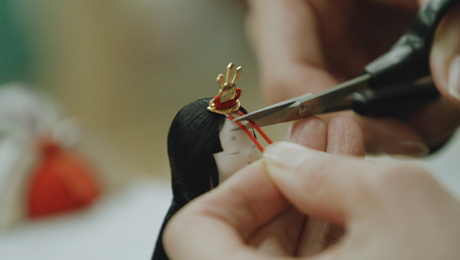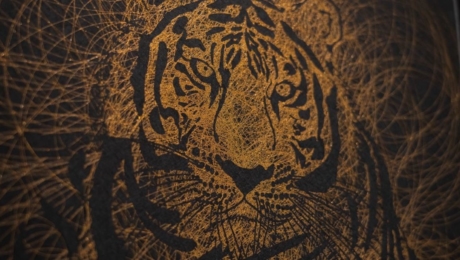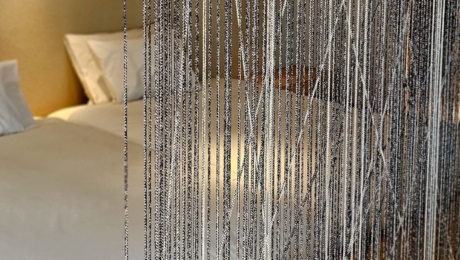
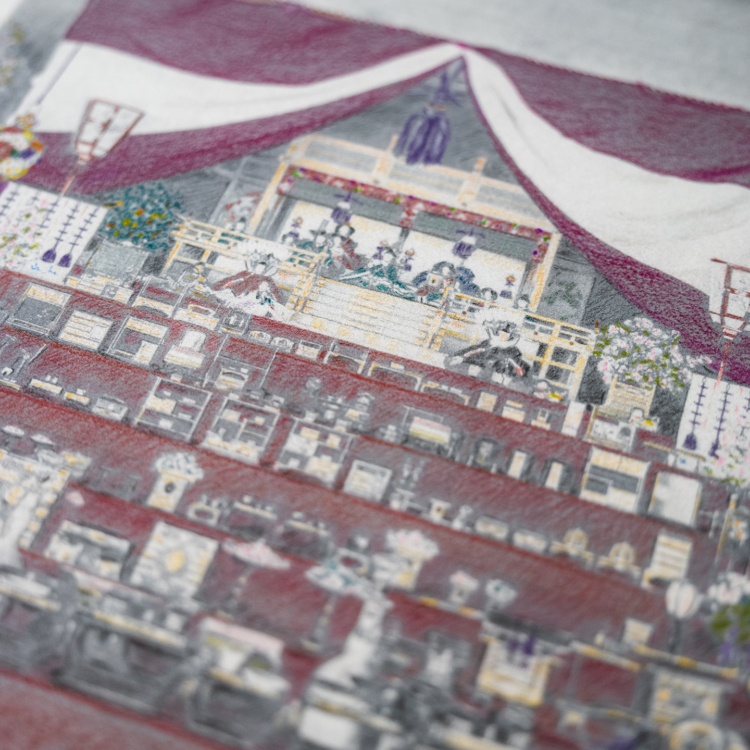
【Edo Tokyo Rethink】The Colors of the Meiji Period’s Hina Dolls, Springing to Life in the Reiwa Period
2022.03.03
LIFE
The former Iwasaki House Garden will host the EDO TOKYO RETHINK exhibition. During the Meiji Period, the estate of the garden was home to the Iwasaki clan, who celebrated the Girl’s Day festival by decorating the estate with hina dolls.
However, 120 years after the estate was first built in 1896, the only remaining evidence of these dolls are monochrome photographs taken during that time.
As part of the exhibition, a digital coloration team with contemporary artist Noritaka Tatehana at its core has been formed, with supervision from doll artisans Koikko Matsuzaki Ningyo.
Enlarging photographic materials borrowed from the Tokyo Metropolitan Park Association, Koikko Matsuzaki Ningyo’s President Mitsumasa Matsuzaki has drawn upon his deep knowledge of the colors used for the dolls’ kimonos. Based on his thoughts as to what colors might have been used at the time, the team has studiously colored in the photos by hand.
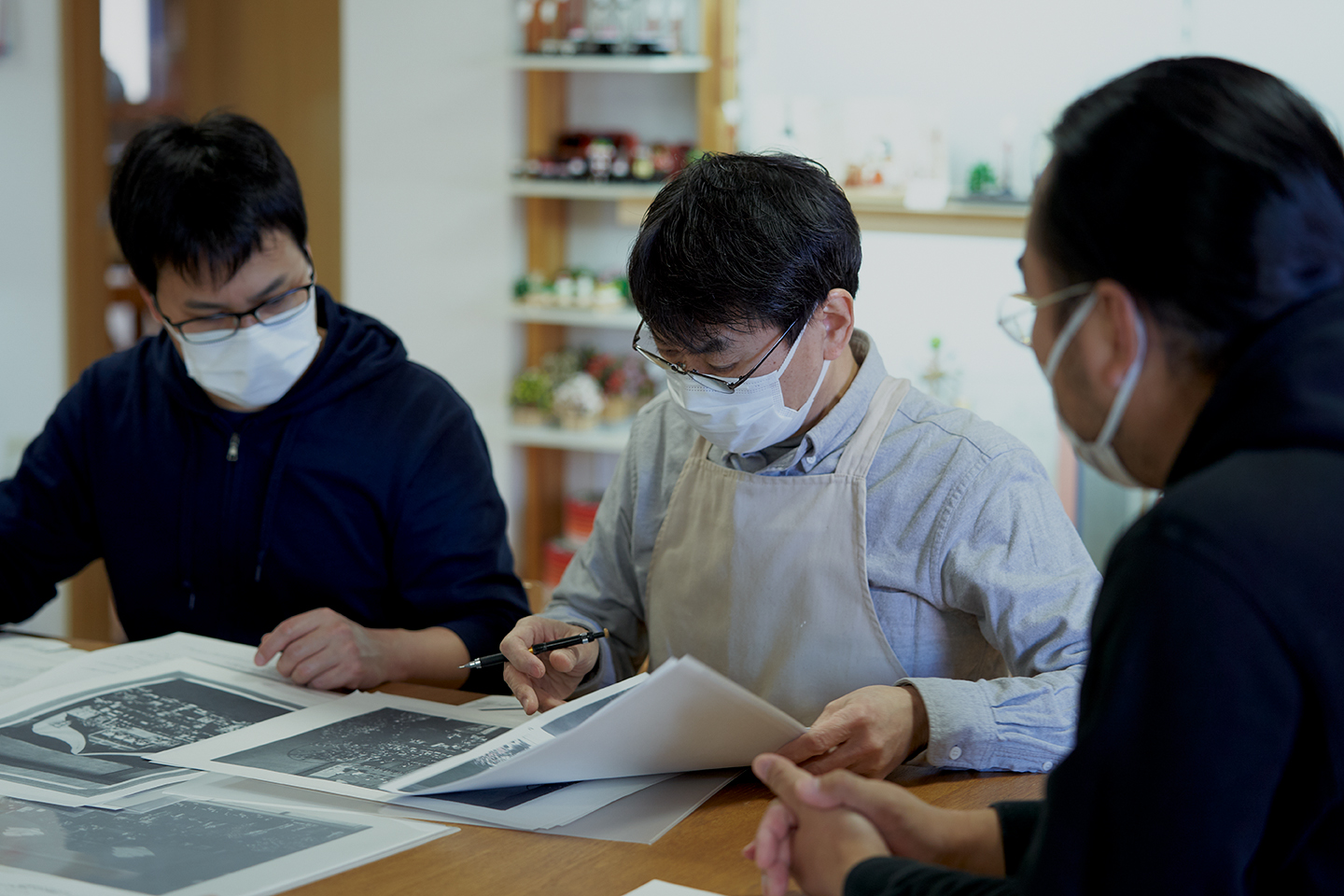
In meetings held in the Koikko Matsuzaki Ningyo workshop, topics were not simply limited to those regarding dolls, for example;
“In the Kanto region today, the princess doll is positioned on the right side from the viewer’s perspective. But at this time, they were in fact positioned on the left, as you can see in this photo. It wasn’t until the end of the Taisho Period that the positions of the dolls were formally established, and until then, it was quite free form.”
“There seems to be a case with a family crest on it that the five court-musician dolls were placed in, but it’s a little hard to make it out in this photo.”
“I think the carpet placed under the dolls would probably have been a very vivid red.”
There were even discussions about their work in the present day, such as;
“I learned that in the past, artisans would get their funds from doll-dealers, and then played during the summer seasons. I even heard that in the cities, there would be various artisans such as lacquer workers and woodblock printers. Holes would be opened up in tenement houses so that they could directly work together.”
“My grandfather began studying as an artisan soon after elementary school, and set up his own workshop when he was 18. When it was first founded, the design of the head was left to an artisan who specialized in doll’s heads, but my father, who was born in 1923, always loved to make things. So he learned how to make the doll’s heads as well. He was apprenticed to a disciple of Kōun Takamura, who was born in Shitaya Ward (present-day Taito Ward).

Exhibition director Tatehana described the cultural value of the restoration project.
“The digital coloration of these photographs is not simply being done to restore historical materials. We consider it an important part of the exhibition. This is a collaboration between materials based on the beautiful coloring done by the hand of Mitsumasa Matsuzaki, and our digital restoration. I feel that this work has allowed us to look back on an important piece of history relating to the former Iwasaki House Garden, and view this traditional culture in a new way from the perspective of today’s Reiwa Period.
The preparations were made for the exhibition during the annual Dolls’ Festival.
Even as the dolls’ expressions, clothing, and arrangement might change, the wishes of people during the festival will likely be the same for all time. When enjoying the colors added in the present-day, cast your mind to the past and consider how people in the past might have lived.



Hand Colored Materials
Production: Koikko Matsuzaki Ningyo
Digital Colored Photographs
Supervision: Koikko Matsuzaki Ningyo
Production: NORITAKA TATEHANA K.K.
Photo courtesy of NORITAKA TATEHANA K.K.
*All necessary safety precautions were taken during the interview as part of COVID-19 prevention.
Online Exhibition Outline
Exhibition Title: Edo Tokyo Rethink -The Future of Traditional Industries Represented by Art in the Former Iwasaki House Garden-
Exhibition Period: March 24, 2022 (Thu) 14:00 – March 31, 2022 (Thu)
*The exhibition will be available for viewing as an archive at the same URL even after the online exhibition ends.
Organizer: Tokyo Metropolitan Government, Edo-Tokyo Kirari Project
Co-organizer: Tokyo Metropolitan Park Association



